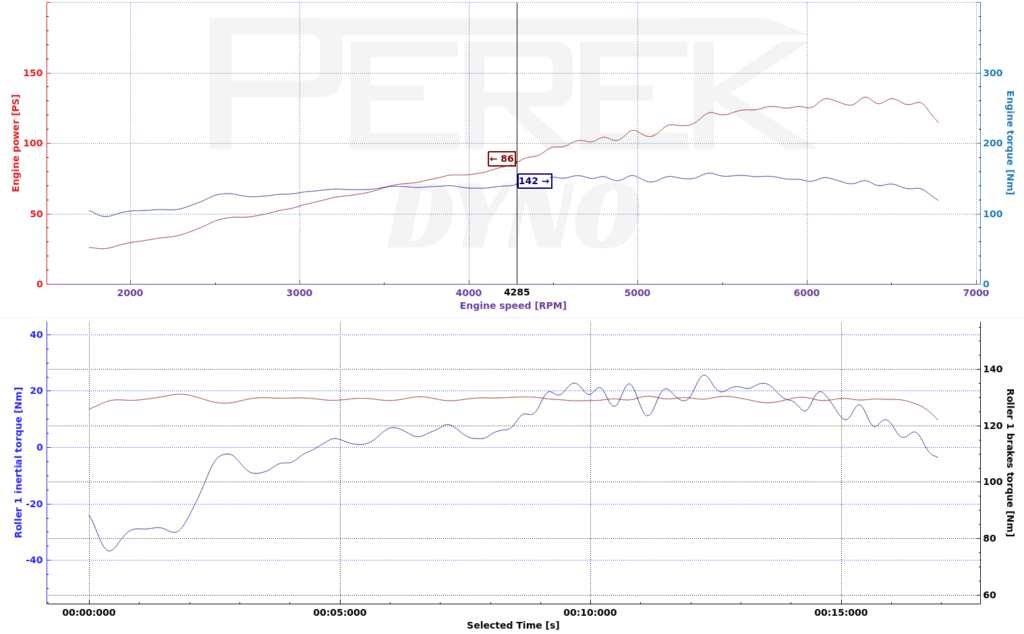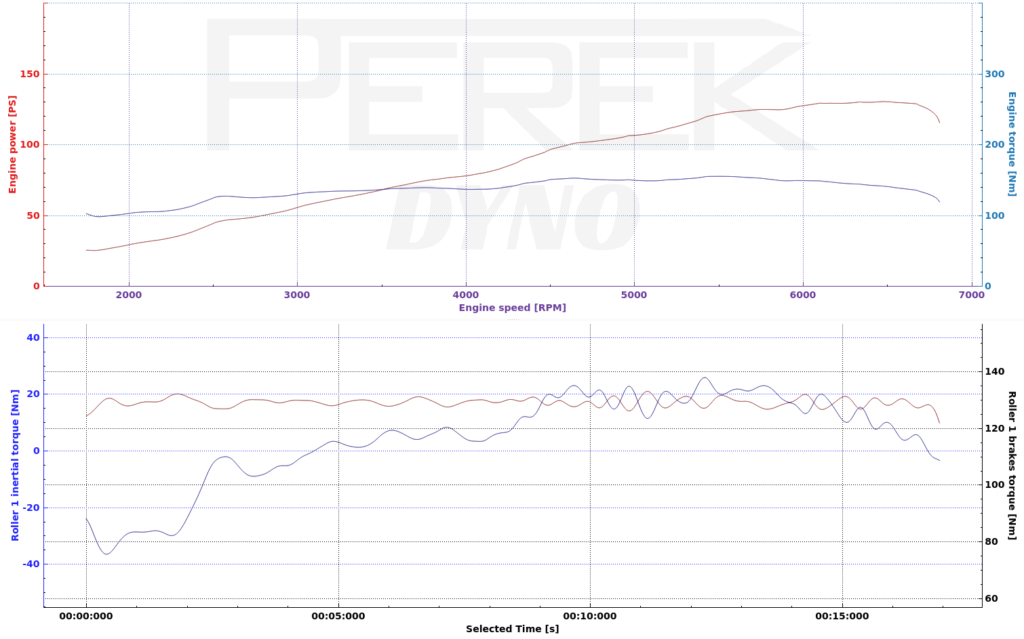Power on the engine characteristic is a sum of power absorbed by the dyno absorber (brake) and power absorbed by rotating mass inertia. If we assume that the engine power output is constant is some period of time, if the brakes applies higher torque, the acceleration drops and the calculated power sum is still constant despite change of its components. For this to be true, the load cell must be correctly calibrated, and rotational inertia values entered in the program must be real.
There is another player in this power sum game: signal filters. When the absorber torque is changed abruptly, these play a significant role in power calculation. Path for inertial and absorber part of power must have same filtering applied.
Inertial filter path: SETTINGS / Frequency Input / Frequency low pass filter -> SETTINGS / Frequency Input / Frequency change low pass filter
Absorber path: SETTINGS / Load Cell / Low pass filter
Let’s check this on an example. The filters were set incorrectly to:
Frequency Input / Frequency low pass filter: 1Hz
Frequency Input / Frequency change low pass filter: 3Hz
Load Cell / Low pass filter 2Hz
As a result, the inertial path has filtering around the value of the lower filter, which is 1Hz and the load cell has 2Hz. Here’s the effect of this configuration:

The inertial torque is smoothed more and when it is summed with brakes torque, we get waves on engine power curve.
Now let’s correct these settings:
Frequency Input / Frequency low pass filter: 20Hz
Frequency Input / Frequency change low pass filter: 2Hz
Load Cell / Low pass filter 2Hz
The Frequency low pass filter usually doesn’t need to have such a strong filter. If you ended with one, check if your speed signal is OK.
The other two filters were set to the same 2Hz value.

Now both inertial torque and brake torque are smoothed less, but their sum is steady.
If correct setting of the filters didn’t solve your problem, you probably have PID controller set too aggressively. In case of chassis dyno this will cause the vehicle to move on the dyno and tires to flex. This action will accumulate and release energy, which will result in waves on power characteristic.
